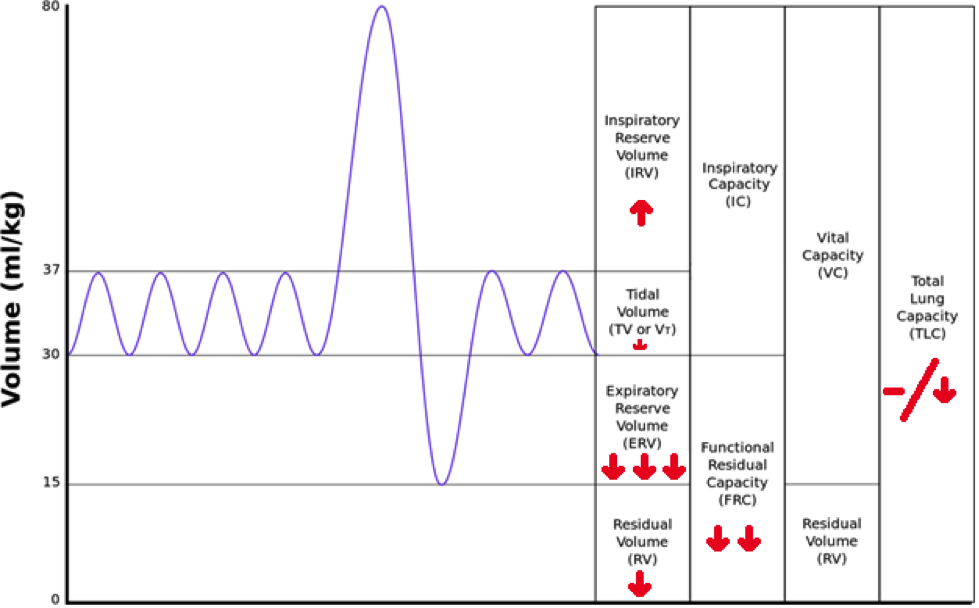Copy link
Obesity: Lung volumes
Last updated: 06/02/2016
Obese patients develop respiratory disease in a restrictive pattern, with decreased FEV1 and FVC but preserved FEV1/FVC ratio. Fat collections on the chest wall lead to decreased chest wall compliance and possibly lung compliance as well. Abdominal fat displaces the diaphragm upward. This in turn leads to severely decreased Expiratory Reserve Volume (ERV) as well as mildly decreased Residual Volume (RV), corresponding with a decrease in Functional Residual Capacity (FRC). The reduction in ERV is seen even in patients with mild-to-moderate obesity and can become so severe that closing capacity is approached at end-expiratory volumes. Obese patients’ breathing patterns also change such that Tidal Volume (TV) decreases with a corresponding increase in respiratory rate.
Total lung capacity remains unaffected or mildly decreased in obese patients. Since TLC = RV + ERV + TV + IRV, this means that inspiratory reserve volume is generally modestly increased in obese patients.

Copyright Information

This work is licensed under a Creative Commons Attribution-NonCommercial-NoDerivatives 4.0 International License.